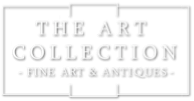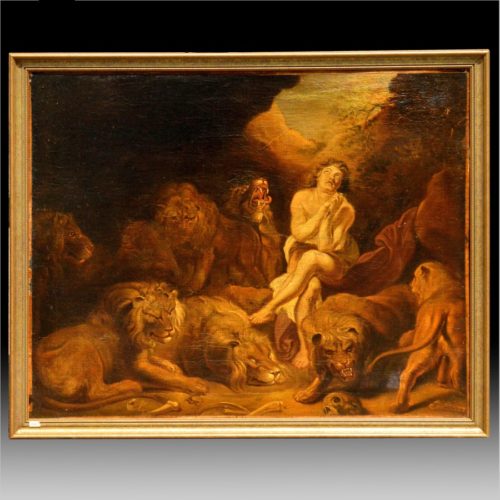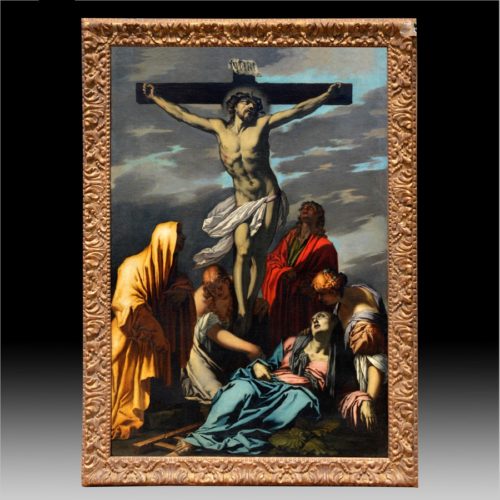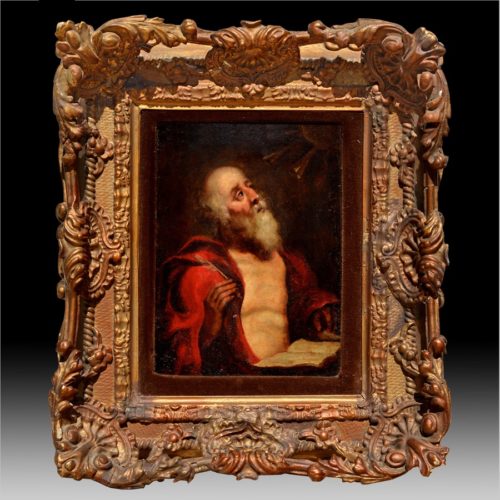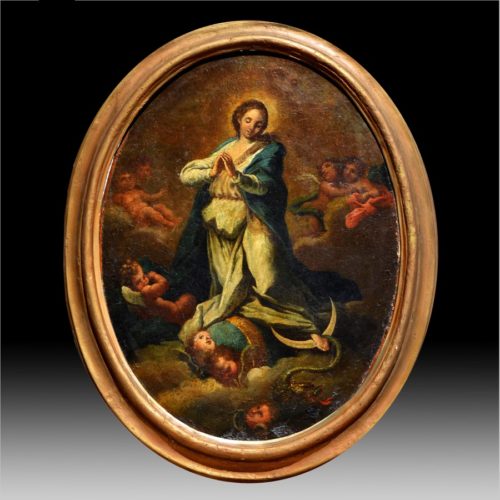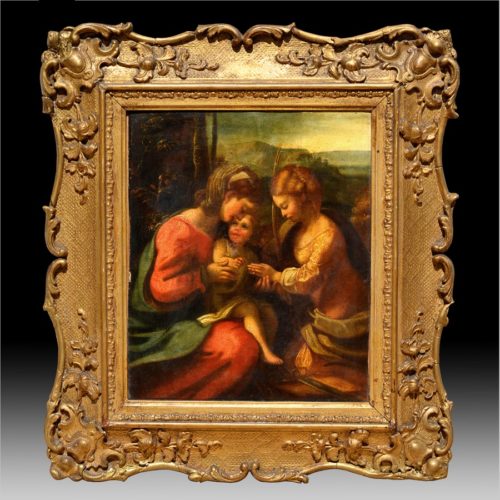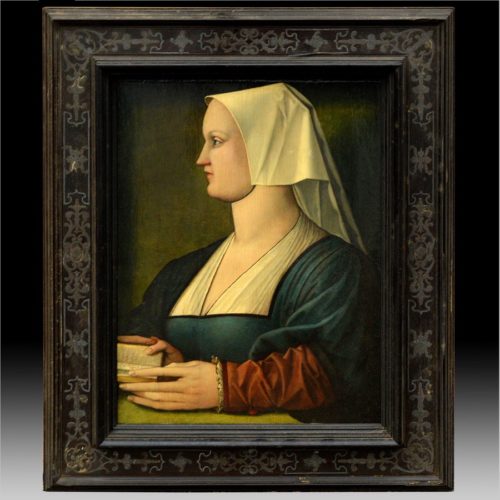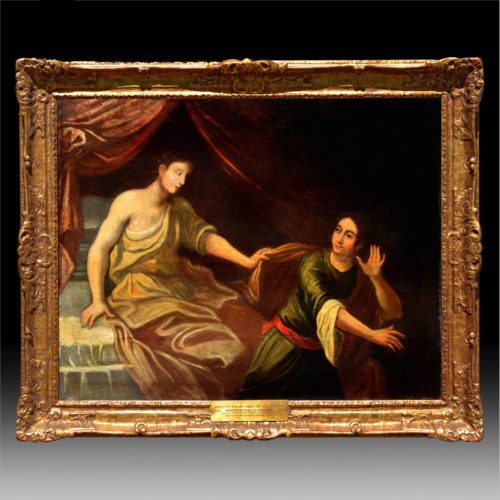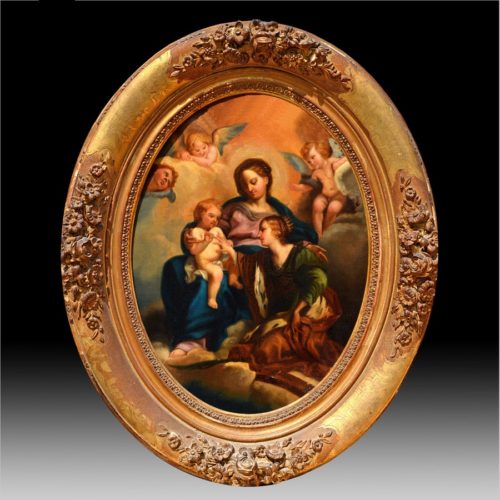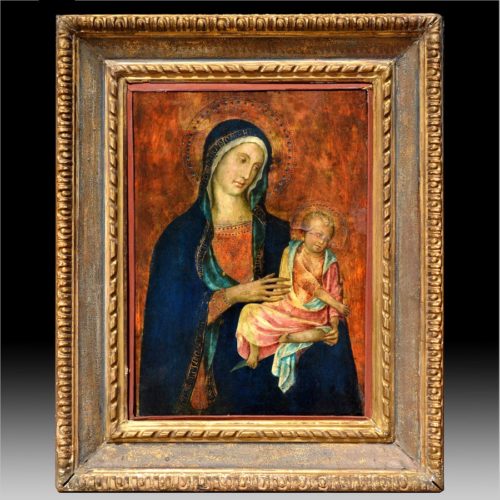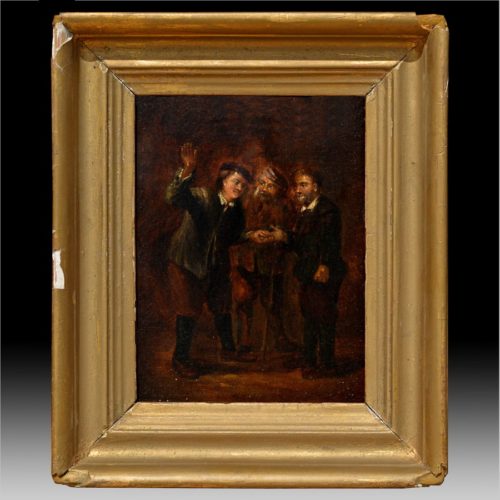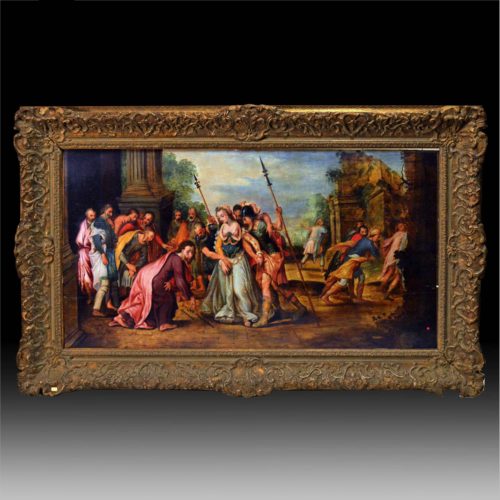Antonio Allegri da Correggio
“The Mystic Marriage of Saint Catherine”
Oil on canvas
10 ½” x 9”
(26.7 x 22.8 cm)
Antonio Allegri da Correggio (August 1489 – March 5, 1534), usually known as Correggio (Italian), was the foremost painter of the Parma school of the Italian Renaissance, who was responsible for some of the most vigorous and sensuous works of the 16th century. In his use of dynamic composition, illusionistic perspective and dramatic foreshortening, Correggio prefigured the Rococo art of the 18th century. He is considered a master of chiaroscuro.
In 1503 he was apprenticed to Francesco Bianchi Ferrara in Modena, where he probably became familiar with the classicism of artists like Lorenzo Costa and Francesco Francia, evidence of which can be found in his first works. After a trip to Mantua in 1506, he returned to Correggio, where he stayed until 1510.
